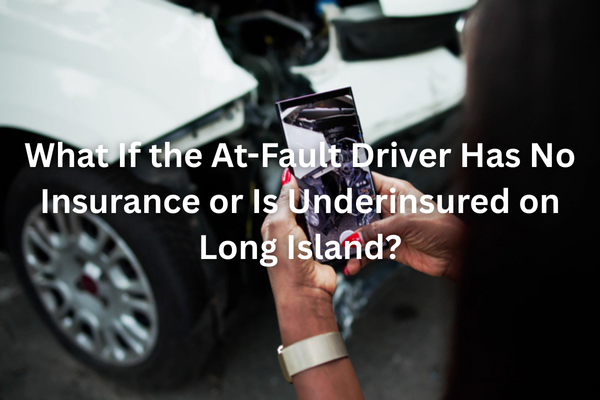

You did everything right. You stopped, exchanged information, called the police, and got medical care. Then you learn the other driver has no insurance or only has the bare minimum. It is a frustrating moment, but it does not mean you are out of options. New York’s insurance system gives you several paths to get medical bills paid and to pursue compensation for your injuries, even when the other driver cannot. Here is a clear, practical guide to what happens next and how to protect your claim.
New York is a no-fault state. That means your own policy’s Personal Injury Protection, often called PIP, pays reasonable and necessary medical bills and a portion of lost wages, regardless of who was at fault. PIP is the first layer of coverage in almost every car crash in New York.
If your injuries meet the “serious injury” threshold under New York law, you can also pursue a bodily injury claim against the at-fault driver. That is where the problem arises when the other driver is uninsured or has limits that are too low to cover your losses.
Every New York auto policy includes Uninsured Motorist coverage, or UM, for bodily injury caused by an uninsured or hit-and-run driver. If the other driver has no insurance, your UM coverage steps in. UM is designed to compensate you for damages like pain and suffering and any out-of-pocket losses that PIP does not cover.
Key points about UM:
When the at-fault driver’s liability limits are too low to cover your damages, Supplemental Uninsured/Underinsured Motorist coverage, or SUM, can make up the difference. In New York, insurers must offer SUM, often up to the same limits you chose for your own bodily injury liability coverage, unless you opted out in writing. If you purchased it, SUM can be a lifeline.
How SUM works in practice:
If you do not have UM coverage available, or if there are unusual circumstances, the Motor Vehicle Accident Indemnification Corporation, known as MVAIC, may be a payer of last resort for bodily injury claims from New York crashes. Eligibility is narrow and deadlines can be as short as 90 days to file a notice of intention in certain hit-and-run situations. If MVAIC might be involved, you should act quickly so you do not lose the opportunity.
UM and SUM focus on bodily injury. For your car, you will typically rely on your collision coverage to repair or replace the vehicle, minus your deductible. If the other driver is identified and insured, you may pursue their property damage liability coverage, but when they are uninsured or underinsured, your own collision coverage is usually the fastest path to getting back on the road. Save all repair estimates, rental car receipts, and towing bills.
Our team maps out a coverage strategy from day one. We verify every available policy, request written confirmation of the at-fault driver’s limits, and review your own policy for PIP, UM, SUM, collision, rental, and med-pay benefits. We file the NF-2 on time, coordinate your no-fault benefits, and preserve your rights to UM or SUM by giving prompt notice and securing consent to settle at the right time. If MVAIC is a possibility, we move quickly to protect your eligibility.
On the damages side, we work with your doctors to document the full impact of your injuries, including future treatment and limitations that affect your work and daily life. Where appropriate, we arrange expert evaluations to support the serious injury threshold and present a clear picture of your losses to insurers and, if needed, to a jury. Our goal is simple, to place you in the strongest position for a fair settlement or verdict, even when the at-fault driver brings little or no insurance to the table.
Can I choose my own doctors with PIP? You can, but make sure they accept no-fault. Your attorney can suggest providers who understand no-fault billing.
What if a family member’s policy covers me? UM and SUM often cover resident relatives. Tell your attorney about all household vehicles and policies.
Do I have to give a recorded statement? Speak with your attorney first. You may have to cooperate with your own insurer, but it should be done with preparation.
Will my premiums go up if I use UM or SUM? Every policy and insurer is different. Using coverage you paid for does not automatically mean a rate increase, and protecting your health and financial stability should come first.
If you were hurt by an uninsured or underinsured driver on Long Island, you still have options. Palermo Law has helped injury victims navigate PIP, UM, SUM, and complex coverage issues for more than three decades. Contact us for a free, no-obligation consultation. There are no upfront costs, and we do not collect a fee unless we win your case.